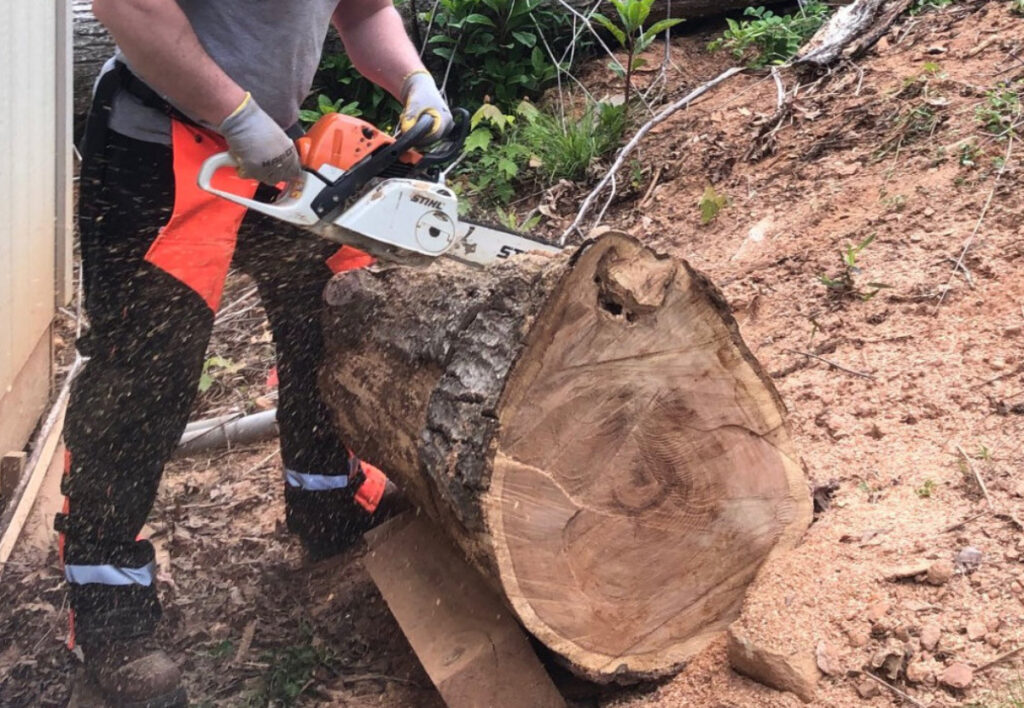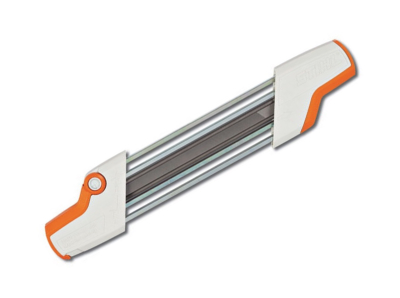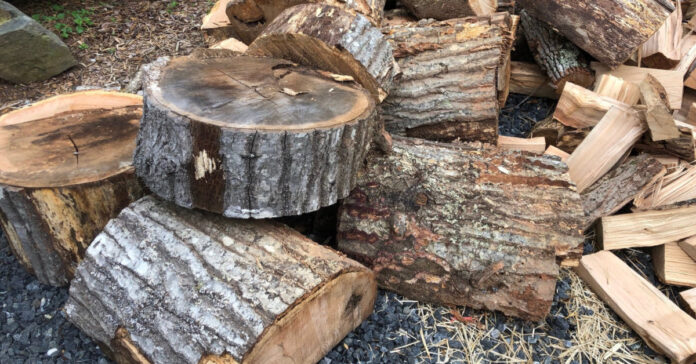This past weekend, I went to a friend’s house to help chop up some large logs that were left after they had some trees taken down. The deal was, I’d cut up the tree trunks and could keep the firewood.
I have a Stihl MS251 with an 18-inch bar, and it has worked fine cutting down and chopping up smaller trees here and at our prior property. When I saw the size of these downed trees, however, I thought I might need a bigger saw. After cutting up several large logs, I can confirm the job would have been far easier with a more powerful chainsaw and a much larger bar. I had the wrong tool for the job.
I now understand why the guys cutting firewood on YouTube all have much larger saws.
The Wrong Tool
I could cut the logs, but I had to make two cuts, once from each side of the tree trunk, to get through the log. As a result, it took twice as long as it would with a larger saw. The oak had been dead about a year, but it was still some very hard wood.
We cut the rounds 16 to 18 inches thick, but they were too heavy to lift into the back of my pickup truck. Aha! I thought. This is why those YouTube guys have tractors with log grapples or own excavators that allow them to grab and lift the logs.

I had to cut each log in half, which took two more cuts. In short, to get one piece of log in the back of my truck, it took four cuts. For those four cuts, I imagine I’ll get maybe 16 or 20 split pieces for my firewood pile.
We cut up the large pieces, filled the truck bed and then piled smaller pieces around it, filling in the voids. The saw chopped through the four-inch to eight-inch limbs from the same oak in no time flat. The saw cuts just fine, but asking it to cut a piece of oak 24 inches in diameter was asking it to punch a couple levels above its weight class.
Black & Decker 40-volt Electric Saw
Knowing it is possible to get one’s chainsaw pinched in a log, I brought the only other saw I have in case I had to cut my saw free: A 40-volt electric Black & Decker with what I assume is a 12-inch or maybe a 14-inch bar. I had used this saw for pruning in the past, but I never considered it a serious saw. I was impressed by how well it worked on logs up to six inches in diameter. The chain speed was noticeably less than the gas saw, but it still cut through limb wood with no problem. I have five batteries so I can charge this with solar after the SHTF and do some cutting without using up valuable supplies of gasoline.
I am happier with this little electric saw today than when I purchased it some years back. As long as I cut a smaller log with it, it will do fine.
The STIHL 2 in 1 Filing Guide

Cutting that much wood gave me a chance to use my STIHL 2 in 1 Filing Guide, which is a funny name for one of their chain saw sharpeners. This device makes it possible for a novice to sharpen their chain and do a pretty darn good job. We used it twice, and each time it made a noticeable difference in the ease with which the saw cut and the size of the sawdust. (Larger sawdust chunks means a sharper chain.)
I have used traditional round files, but I can’t say I am an expert. I have to give this device credit. It makes sharpening quick and error-free. The only way you can make a mistake using this device is if you refused to read the directions.
Next Steps
I ended up getting two pickup truck loads of firewood. I think there’s enough downed trees to take me eight weekends to clear them up, but without a larger saw, I’m going to focus on cleaning up the limbs and smaller trees. There are some maple and hickory trees that are in the right size range for my equipment. By tackling the bigger logs, I bit off more than I could chew.
This experience also taught me that I am doing the right thing buying firewood. The dollars spent buying firewood versus my effort extended (and the cost of making two round trips) are well worth it. By the time I spend enough money to equip myself to efficiently cut and split large amount of my own firewood, I can buy many cords of pre-cut and split wood.
I figure I cut around a week to ten days’ worth of firewood out of one day’s worth of hard work. That’s a good reminder that in a post-SHTF situation, I will have to work several days a week to provide sufficient firewood to warm our prepper property for the winter. Even if I use a chainsaw to cut it, I will have to haul it and split it manually. That will be no easy task. (Time to call my wood supplier and order a sixth cord.)
I guess I’m lucky that a former owner had logged our property a few decades back. None of our trees are as big as those I tried to tackle. My saw can probably handle 95 percent of the trees on our property. I just hope I don’t have to.







